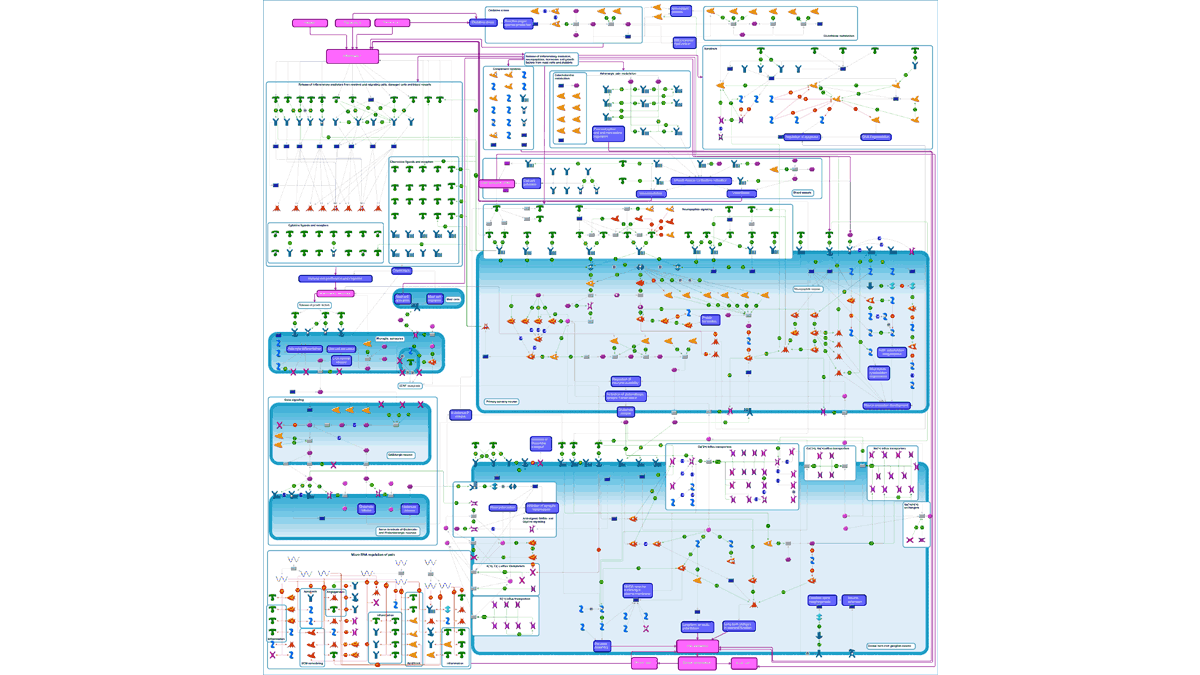

Explore our recent stories to see what drives us
10 July 2019
The Pain Pathway Map fosters collaborative pain research
Enhanced disease understanding

Grünenthal’s Pain Pathway Map brings together findings from research and the clinic to gain a deeper understanding of pain conditions. By sharing knowledge, the initiative supports researchers in creating solutions that improve patients’ lives.
“This project will enhance pain disease understanding – the key for meaningful research programs”
Understanding diseases is the key to developing effective treatments for patients – but pain indications aren’t easy to understand and have various overlaps. For example, separate indications produce the same symptoms. That’s why it’s so important for researchers to identify the exact properties of these symptoms and find out if the related biological processes are similar in all indications that share a certain symptom. This can help scientists to recognise opportunities for therapeutic approaches and modalities to be used to treat patients who share the same symptoms but are suffering from different indications. These insights support the scientific community in selecting research targets and increases the potential positive impact of new medicines.
The spirit of collaborative exploration is at the heart of Grünenthal’s Pain Pathway Map that aims to strengthen disease understanding and recognise the underlying mechanisms that cause pain. Our translational science team has created a database of Omics information – data on the role and behaviour of genes, proteins and cells in certain indications. This data was collected from publicly available sources and brought together with clinical study results that were provided by research centres. Once the team had analysed this data, they created an integrated disease pathway map that displays the interaction and interdependencies of the various cell types and processes in the human body in certain indications. This way, the Pain Pathway Map can be used to gain a full overview of overlapping and unique pathways, enabling researches to identify relevant similarities, connections and eventually potential research targets. Currently, the Pain Pathway Map covers eight indications and will be continuously extended.
“We’re committed to collaborative research, connecting scientists and knowledge from around the globe”
The Pain Pathway map is available online as part of Grünenthal’s broader PainSolve initiative that promotes the co-development of new solutions by creating a global community of pain researchers. In this context, our translational science team wants to expand its platform by working with researchers and institutions from around the world. We’re actively looking for new partners to expand the database of the Pain Pathway Map. Driving these projects, Grünenthal aims to foster and deepen the scientific community’s understanding of pain conditions and support cutting-edge research that drives progress towards a world free of pain.
